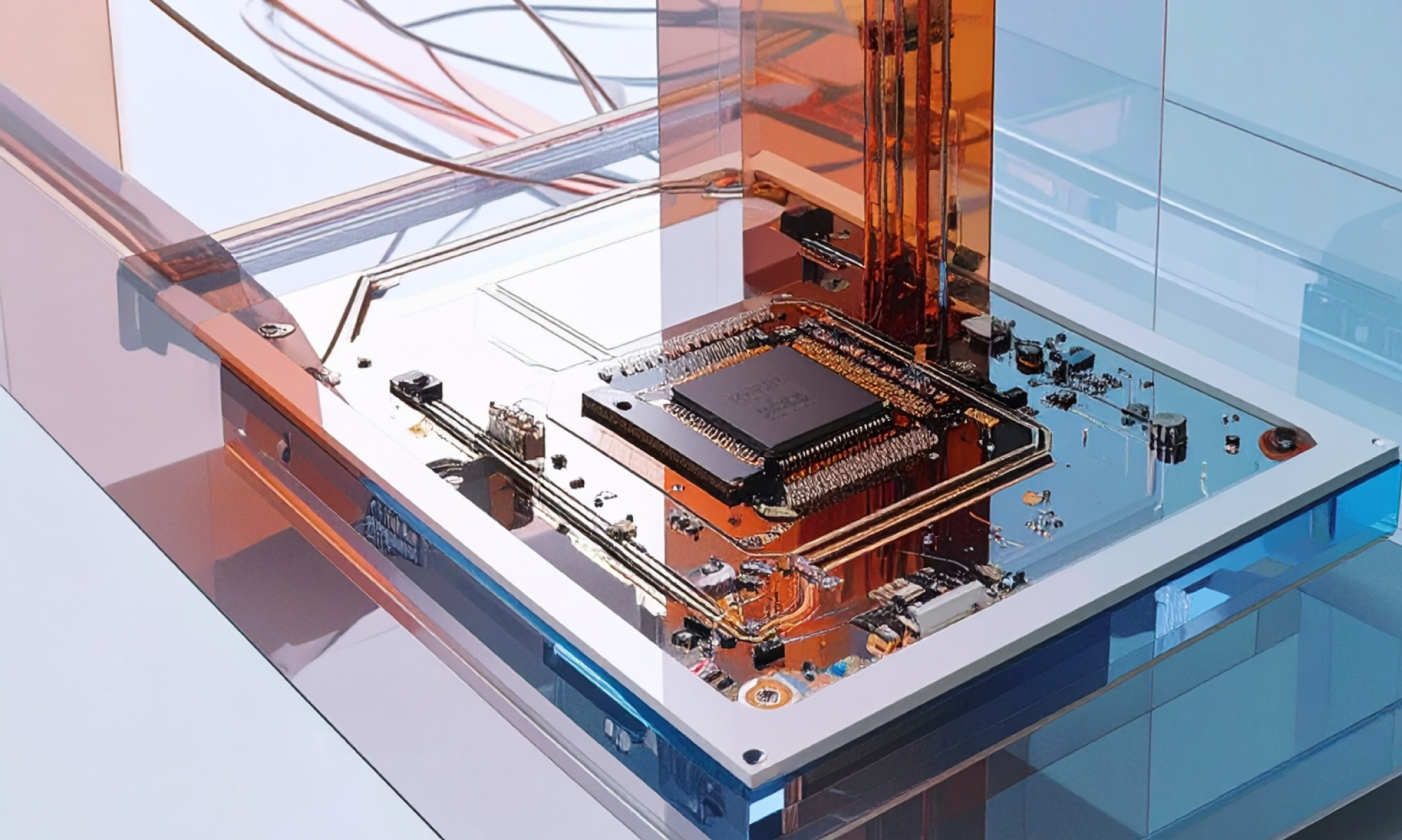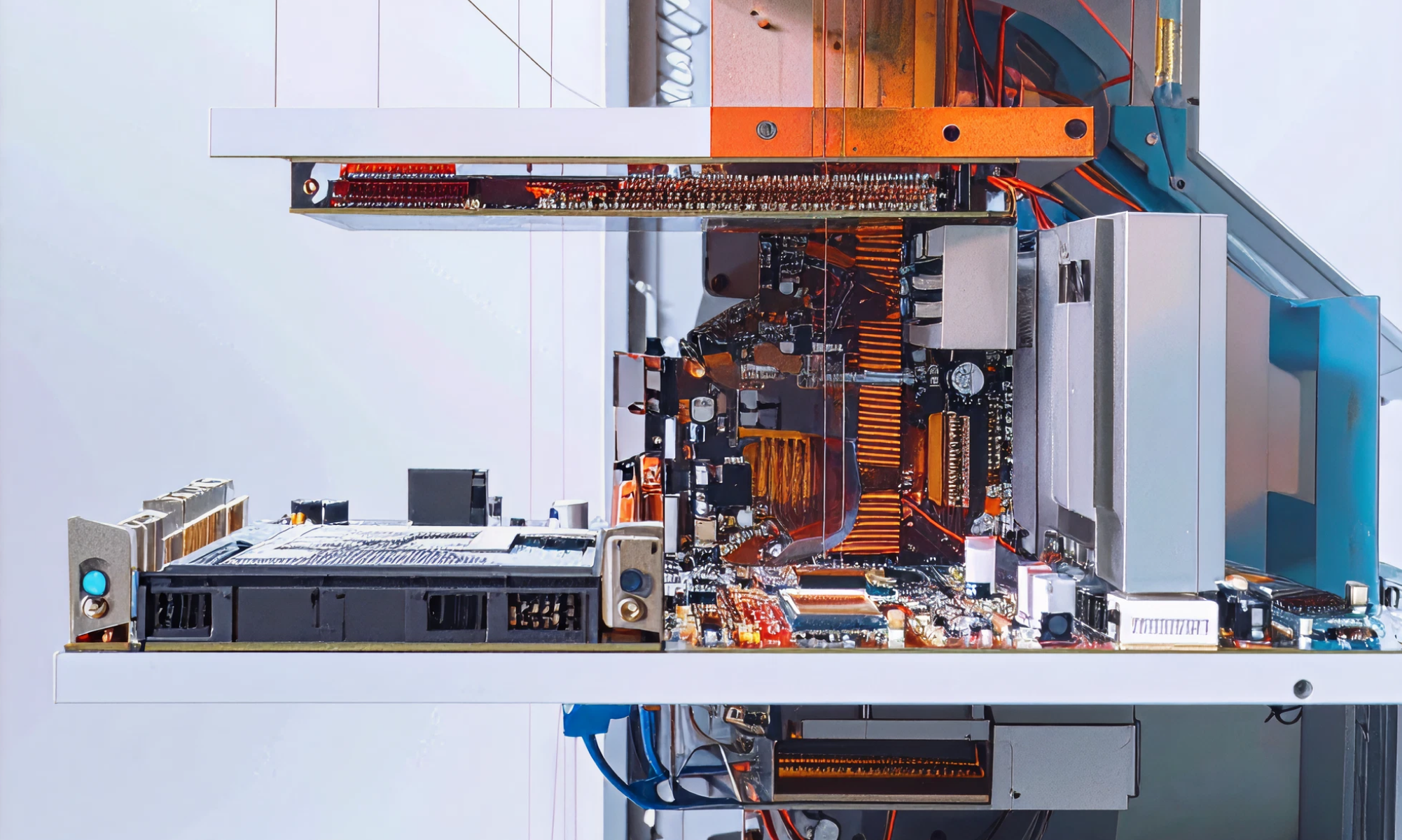AI
our blog
10 AI Software Development Services to Boost Your Efficiency

Overview
The primary objective of this article is to underscore the diverse AI software development services that can significantly enhance efficiency within software development processes. It discusses how services such as automated testing, AI-driven bug detection, and project management tools streamline workflows and bolster productivity. Moreover, these innovations foster a culture of creativity and advancement, ultimately illustrating their transformative influence on the software development lifecycle. By harnessing these AI capabilities, organizations can navigate the complexities of development with greater ease and effectiveness.
Introduction
The integration of artificial intelligence into software development is not merely a trend; it represents a transformative force that is reshaping the industry landscape. By leveraging AI software development services, organizations can unlock unprecedented levels of efficiency, innovation, and collaboration. However, as teams embrace these powerful tools, they encounter the challenge of navigating potential pitfalls and ensuring quality amidst rapid technological advancements.
What are the key AI-driven solutions that can propel software development forward? How can businesses harness their full potential to remain competitive in a rapidly evolving market?
Studio Graphene: AI-Powered Digital Product Development
Studio Graphene stands at the forefront of AI-driven digital product creation, harnessing the power of artificial intelligence to craft innovative solutions tailored to the distinct needs of clients. Their comprehensive methodology encompasses the entire product lifecycle, guaranteeing that each project is not only technically robust but also strategically aligned with business objectives.
By integrating AI software development services into their processes, they significantly enhance user engagement and operational efficiency, demonstrating the transformative potential of AI in product development. Furthermore, Studio Graphene employs automated alerts within their DevOps framework, ensuring timely interventions and fostering collaboration among stakeholders.
This proactive communication strategy swiftly addresses potential issues, reinforcing their commitment to continuous integration and agile methodologies, which ultimately streamlines digital product updates and enhances overall project outcomes. The configuration of these automated alerts facilitates efficient notifications to stakeholders, markedly improving response times and project metrics.

IBM Watson: Enhancing Software Development with AI
IBM Watson offers a comprehensive suite of AI resources aimed at enhancing software development services through advanced analytics, natural language processing, and machine learning capabilities. These tools enable developers to:
- Automate repetitive tasks
- Analyze large datasets for actionable insights
- Improve decision-making processes
By incorporating Watson into their workflows, teams can significantly accelerate their cycles, achieving as much as a 30% increase in sprint velocity. Furthermore, AI-generated code constitutes up to 30% of production code in leading companies, underscoring AI's transformative impact on the industry. Developers leveraging Watson tools report completing tasks 55% faster, with AI adoption clearly linked to enhanced productivity and improved developer experiences.
Real-world applications, such as the Wimbledon team's utilization of Watson to analyze over 17 million social media posts, showcase how AI can refine content strategies and boost audience engagement. This initiative resulted in:
- A 24% increase in social media audience
- A 25% rise in video views
Such integration not only streamlines workflows but also fosters the development of more intelligent applications, ultimately driving innovation and operational efficiency in program creation with AI software development services.

McKinsey Insights: AI-Enabled Software Product Development Lifecycle
Incorporating AI software development services into the software product creation lifecycle presents a formidable opportunity to enhance both efficiency and innovation. Recent insights from McKinsey reveal that utilizing AI software development services at every stage—from ideation and design to testing and deployment—enables teams to streamline processes, significantly reduce time-to-market, and elevate product quality.
Continuous integration is pivotal in this framework, empowering product developers at Studio Graphene to regularly merge their changes into a central repository, followed by automated builds and tests. This practice not only aligns with agile methodologies but also facilitates one-click deployments and rollbacks, ensuring that updates are seamless and efficient.
For instance, NextGen Healthcare reported a remarkable 40% increase in story points resolved, underscoring the tangible benefits of AI integration. This comprehensive approach positions AI software development services as a key component of the growth strategy instead of a mere supplementary tool.
As the Data & Analytics Technical Program Manager at NextGen aptly stated, "You can’t improve what you don’t measure," emphasizing the significance of metrics in evaluating AI's impact. However, organizations must also navigate challenges such as maintaining code quality amidst the rise of AI-generated copy/pasted code.
By utilizing AI software development services in the core of product development, organizations can cultivate a culture of continuous improvement and responsiveness to market demands, ultimately driving better outcomes and competitive advantage. To successfully implement AI, CTOs should consider establishing clear metrics for success and investing in training to ensure their teams can utilize AI resources efficiently.

Code Generation Tools: Automating Development with AI
AI-driven software creation solutions, such as GitHub Copilot and OpenAI Codex, are revolutionizing the programming landscape by automating the generation of code snippets and functions from natural language prompts. These tools significantly enhance coding efficiency; studies indicate that developers utilizing GitHub Copilot complete 26% more tasks while enjoying a 42.36% reduction in task completion time.
By alleviating repetitive coding tasks, these AI assistants empower developers to focus on higher-level design and architecture, ultimately leading to a 2.2% increase in job satisfaction and a 2.6% enhancement in workflow. Furthermore, AI-generated code improves code quality, with a reported 3.4% enhancement attributed to automated suggestions and error detection, alongside a 7.5% increase in documentation quality.
Thus, teams can not only boost productivity but also minimize the risk of errors in their codebases, facilitating quicker project delivery and feature rollout. The adoption of AI software development services is becoming increasingly essential, as evidenced by the fact that 92% of developers in large firms are already leveraging AI coding tools, underscoring the transformative impact of AI on software development.
However, it is crucial to acknowledge that AI-generated programming can lead to a 41% increase in bugs, necessitating vigilant oversight in its implementation.

AI-Driven Bug Detection: Ensuring Software Quality
AI-driven bug detection tools leverage advanced machine learning algorithms to proactively identify potential bugs and vulnerabilities in software prior to their deployment. Leading tools like Snyk and DeepCode are at the forefront of this innovation, meticulously analyzing code patterns and providing developers with real-time feedback. This prompt understanding not only enables faster issue resolution but also significantly enhances quality while mitigating the risk of post-deployment failures.
Recent statistics reveal that organizations integrating AI into their development processes experience a 34% increase in job satisfaction among employees. This statistic underscores the positive impact of these resources on team dynamics and productivity. Moreover, employees who utilize AI daily report a 34% higher job satisfaction compared to those who infrequently engage with the technology. The capability of AI to detect anomalies within seconds accelerates incident response, ensuring that systems remain robust and reliable.
Successful implementations of AI in bug detection have yielded tangible results. For instance, organizations that have seamlessly integrated these resources into their workflows have reported a notable reduction in the number of critical issues identified post-launch, thereby demonstrating the efficacy of AI in enhancing quality assurance. As AI technology continues to evolve, its significance in AI software development services will only amplify, driving efficiency and innovation throughout the industry. Furthermore, embedding trust and governance within AI implementations is crucial for maximizing the benefits of these technologies, ensuring their responsible and effective use.

AI in Project Management: Streamlining Development Processes
AI applications in project management, such as Monday.com and Asana, play a pivotal role in optimizing workflows. These tools automate task assignments, monitor progress, and forecast project timelines, addressing the critical challenge of efficiency in team operations. By analyzing historical data, they provide valuable insights into resource distribution and potential bottlenecks. This enables project managers to make informed decisions that can significantly enhance project outcomes. Leveraging AI not only fosters improved collaboration among team members but also ensures that projects remain on track, ultimately driving success.

AI for Documentation: Improving Clarity and Efficiency
AI-driven documentation resources, such as Notion and Confluence, empower teams to produce and maintain clear documentation effectively. These tools not only automate the creation of summaries but also recommend edits and organize information based on user inquiries.
For example, Spotify experienced a remarkable 35% reduction in time spent searching for information after implementing Confluence, which concurrently enhanced cross-team collaboration by 60%. Similarly, Tesla's adoption of Notion resulted in a 45% decrease in email communication, fostering a more interconnected documentation system.
By improving documentation clarity and accessibility, these resources significantly enhance knowledge sharing and onboarding processes, ultimately leading to more efficient development cycles.

AI Security Solutions: Protecting Your Software Assets
AI security solutions, such as Darktrace and CrowdStrike, harness advanced machine learning algorithms to detect and respond to security threats in real-time. These platforms meticulously analyze network traffic and user behavior, identifying anomalies that may signal potential breaches.
For example, AI-driven tools prevent phishing at an impressive 92% rate, compared to just 60% for legacy systems, significantly enhancing protection against such threats. By adopting these AI-driven security measures, organizations not only bolster their ability to protect software assets but also ensure compliance with stringent data protection regulations.
The integration of AI into cybersecurity frameworks has proven to accelerate detection and response times from days to minutes and hours to seconds, enabling swift action against emerging threats. However, it is crucial to recognize that 72% of security teams believe false positives negatively impact productivity, underscoring a challenge in AI implementation.
As organizations increasingly confront sophisticated cyber threats, the proactive capabilities of AI are essential for maintaining robust security postures and safeguarding critical digital assets. Additionally, only 26% of IT professionals fully grasp how AI is being utilized in security, indicating a pressing need for improved education in this area. Furthermore, malicious actors are known to exploit AI technologies, crafting sophisticated cyberattacks that challenge traditional defenses.
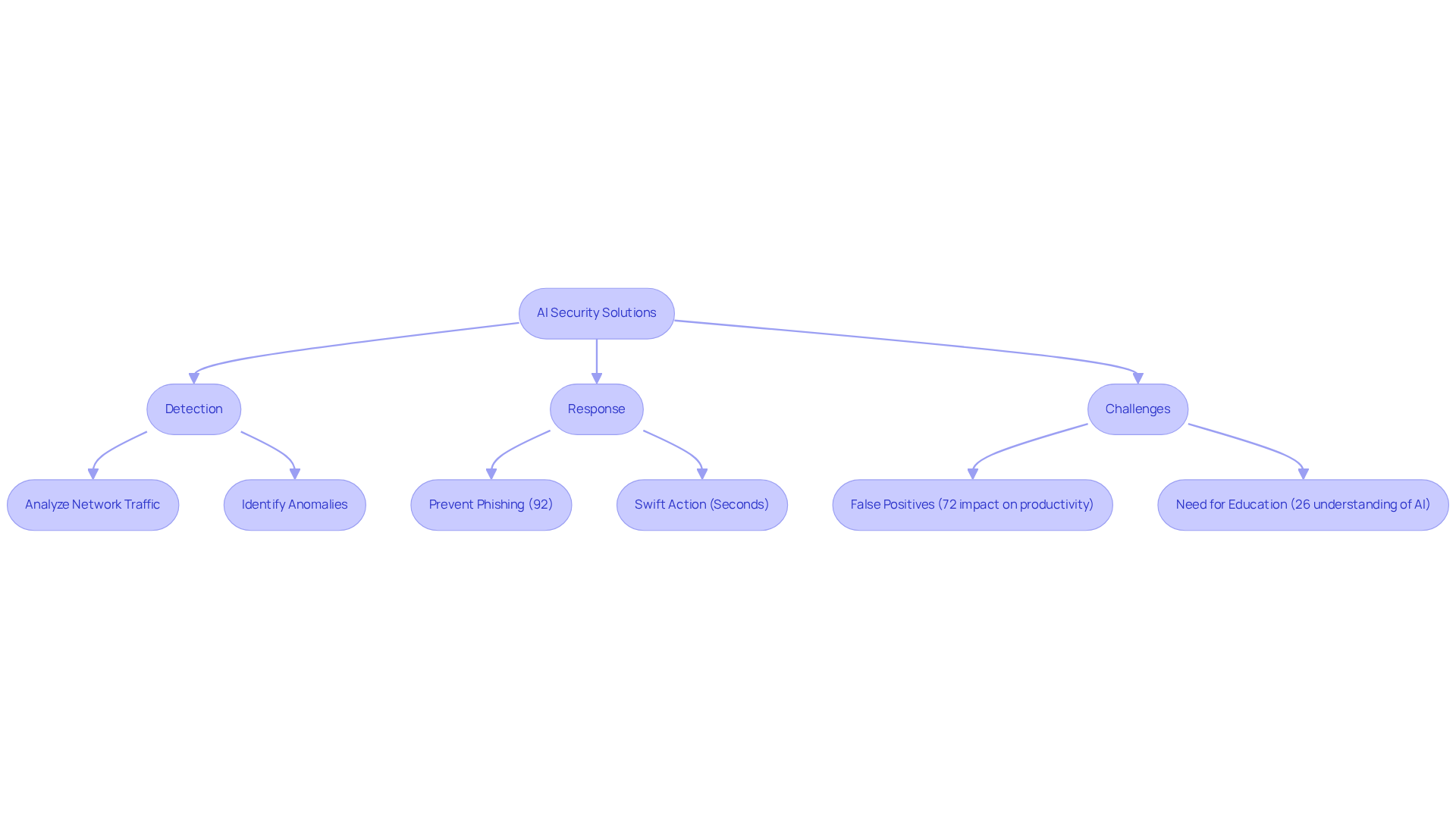
AI in UX Design: Creating Personalized User Experiences
AI is revolutionizing UX design by enabling the creation of highly personalized user experiences through the analysis of user behavior and preferences. Tools such as Adobe Sensei and Figma harness AI capabilities to recommend design elements and layouts that resonate with users, streamlining the design process. This integration of AI not only fosters the development of more intuitive interfaces but also significantly enhances user satisfaction and engagement.
Furthermore, as AI continues to evolve, the latest trends indicate a growing emphasis on adaptive design, where user interactions inform real-time adjustments, further personalizing the experience. This shift underscores the importance of utilizing AI software development services in UX design to meet the dynamic needs of users and drive business success.
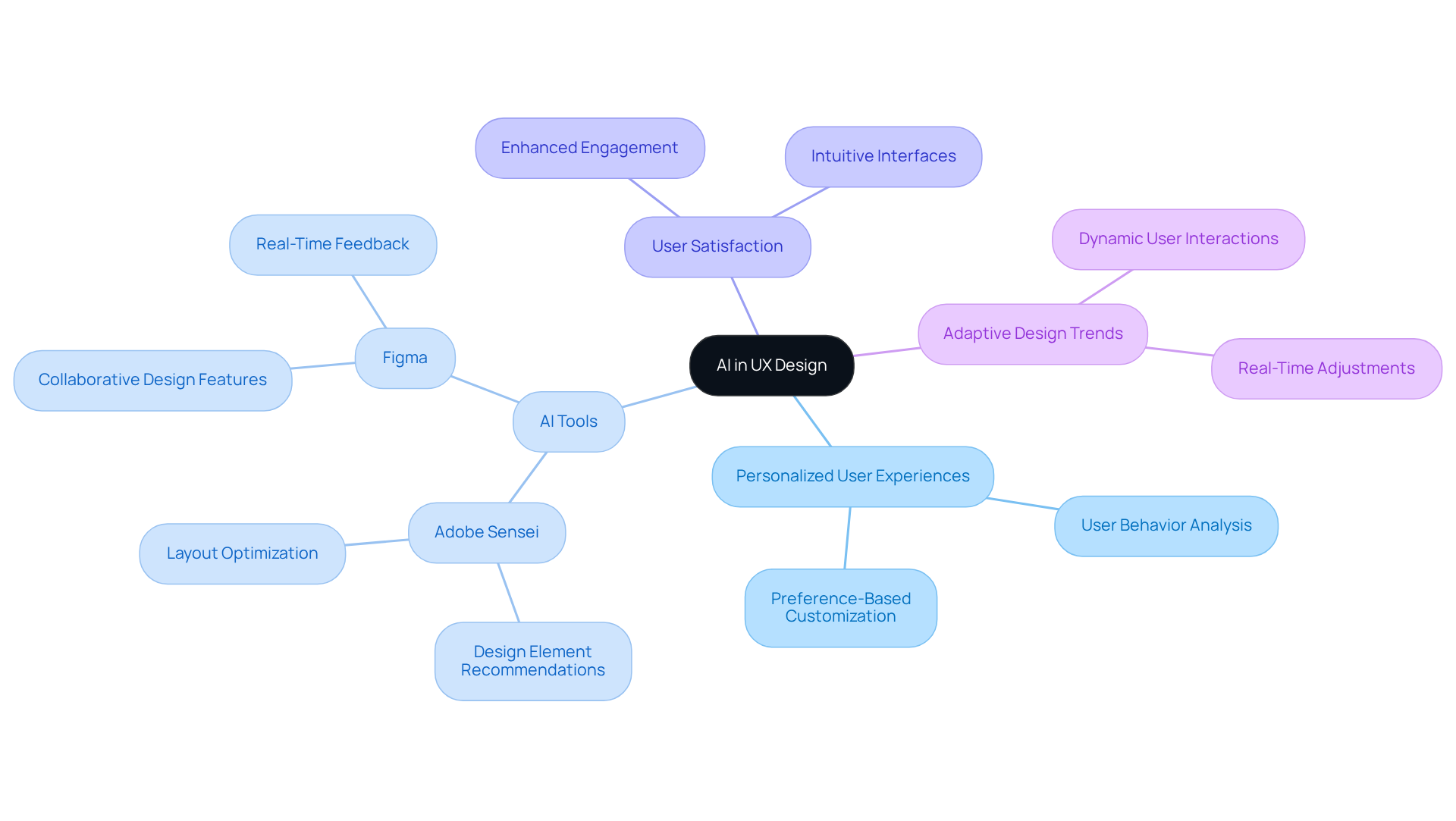
AI in DevOps: Optimizing CI/CD Pipelines for Efficiency
AI software development services are revolutionizing DevOps by significantly optimizing Continuous Integration and Continuous Deployment (CI/CD) pipelines. The challenge lies in the need for increased efficiency and reduced cycle times. By automating testing, monitoring, and deployment processes, AI software development services enhance operational efficiency and decrease cycle times.
For instance, Jenkins and CircleCI leverage AI capabilities to predict build failures and dynamically allocate resources, ensuring that deployments are executed smoothly and efficiently. Furthermore, the integration of AI software development services not only accelerates deployment cycles but also enhances software quality by minimizing errors and improving reliability.
Recent advancements in AI-driven monitoring tools, such as Datadog and Splunk AI, further contribute to this optimization by providing real-time insights and predictive analytics. This allows teams to proactively address potential issues before they escalate.
As organizations increasingly adopt AI software development services in their DevOps practices, the outcome is a marked improvement in deployment efficiency, enabling faster delivery of high-quality applications.
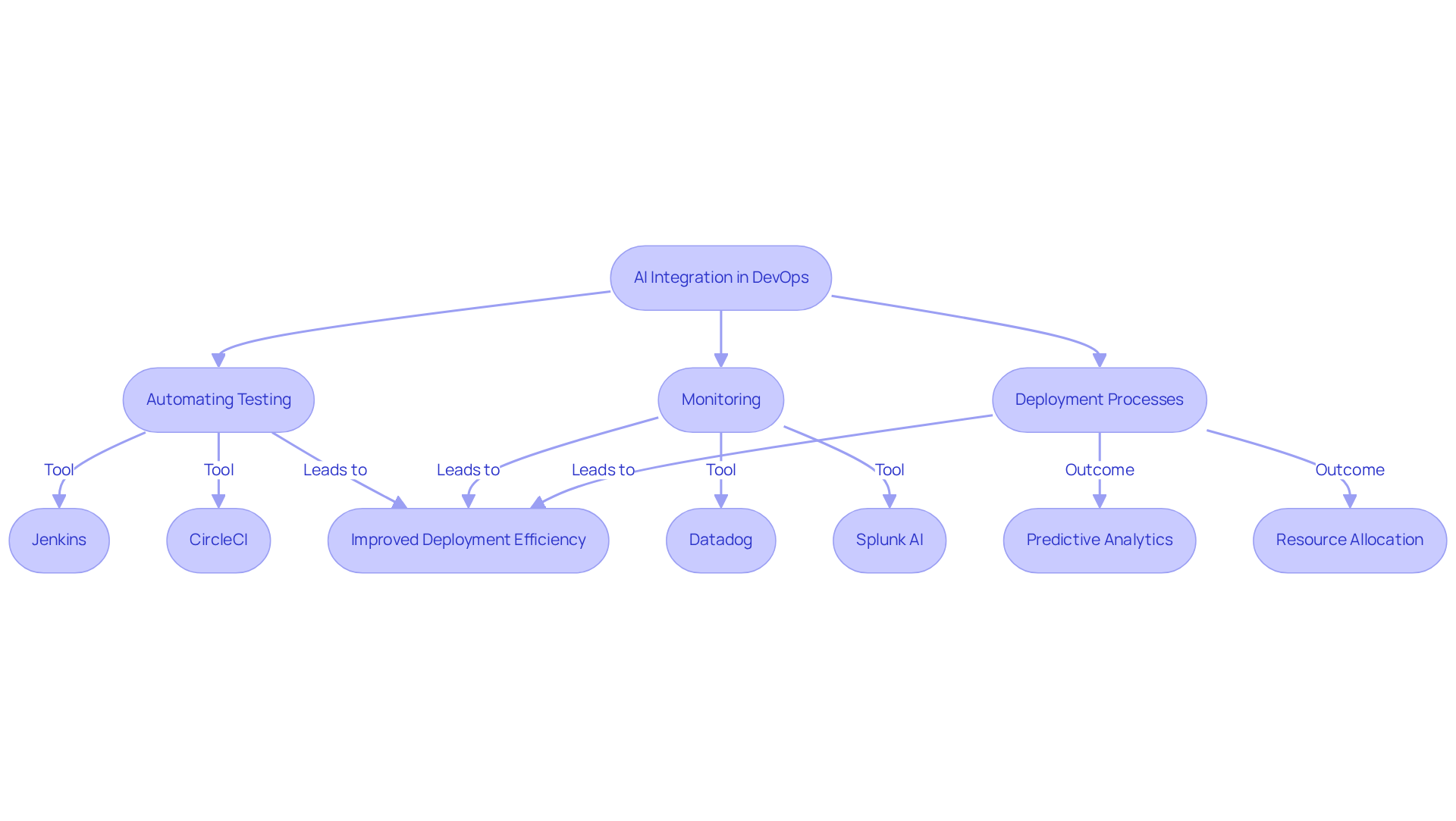
Conclusion
The integration of AI software development services is fundamentally transforming the landscape of product creation, offering substantial enhancements in efficiency, quality, and user engagement. By leveraging advanced tools and methodologies, organizations can streamline their processes and achieve remarkable outcomes, from reducing time-to-market to elevating product quality. The emphasis on continuous integration and proactive communication strategies further illustrates the potential of AI to revolutionize software development practices.
Throughout this exploration, key insights have emerged, highlighting the capabilities of various AI tools—from IBM Watson's analytics prowess to automated bug detection and project management solutions. Each service contributes uniquely to the development lifecycle, underscoring the importance of adopting AI to foster innovation and productivity. The statistics and real-world applications discussed reveal a clear correlation between AI adoption and improved performance metrics, making a compelling case for its implementation.
As the software development industry continues to evolve, embracing AI is not merely an option but a necessity for organizations aiming to remain competitive. The call to action is clear:
- Invest in AI software development services
- Prioritize training for teams
- Establish clear metrics for success
By doing so, businesses can harness the full potential of AI, driving not just efficiency but a culture of continuous improvement that meets the ever-changing demands of the market.
